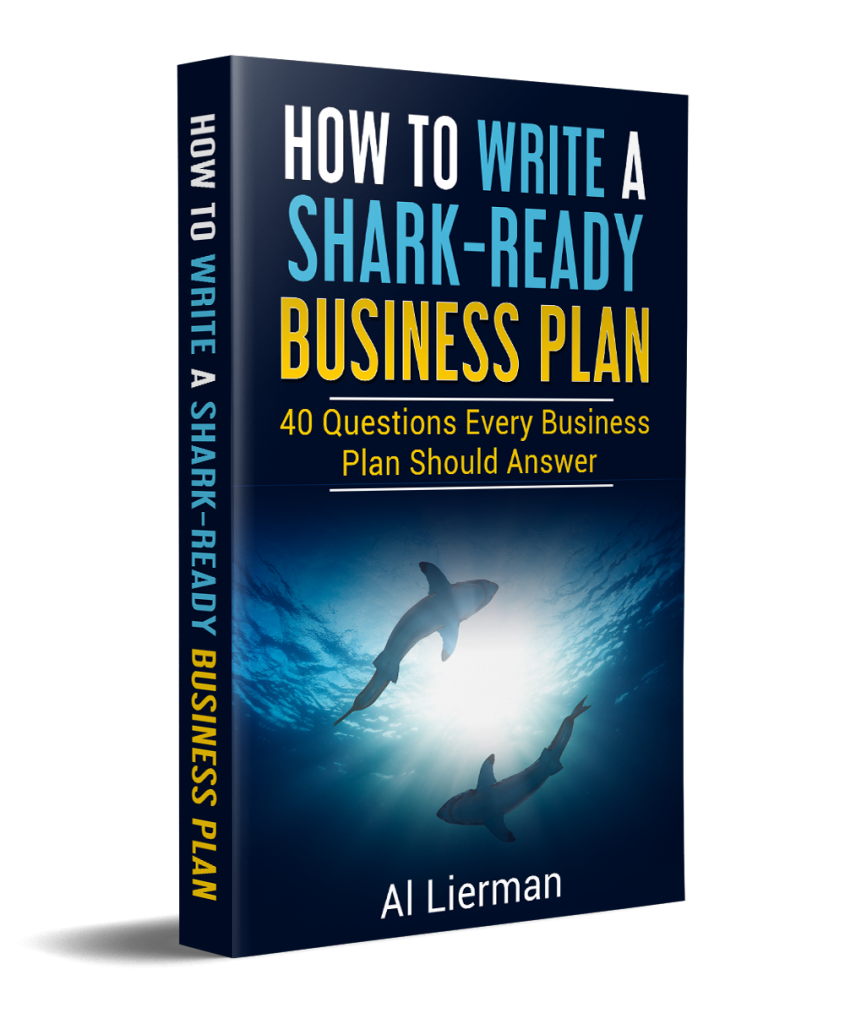This article will show you all of the appropriate sections to include in your business plan.
There is not just one format that you can use to complete a business plan. The business plan outline below is certainly standard and will provide your reader everything he or she needs.
Title Page
Your business plan should begin with a title page that includes the name of the business, its address, and the date the plan is presented. Other information, such as the name of the presenter, email address, or web site information are fine too but not absolutely required. The page should look something like this:

Executive Summary
The executive summary is a one to three page summary of the contents of the plan. A method we like to use to complete the executive summary is to wait until the main portion of the plan is written. Then write a paragraph or two to summarize each section of the plan.
Using this approach will ensure that the information in the summary is consistent with that in the body of the business plan. What you will end up with is an executive summary that has paragraph headings that match the major sections of the business plan itself.
If you would like to see what this looks like, feel free to download our Executive Summary Template. It will give you a great sense of this approach. It is also a good introduction to our full-length Business Plan Template.
Company Description
The company description is just what it sounds like: pertinent information about your company. Paragraphs should include some or most of these: Mission, Vision, History, Ownership, Products, Intellectual Property, Future Products, and Locations.
Industry Analysis
It is important for your plan and readers of it to understand the industry in which you compete. A good industry analysis provides not only solid background information, but also the rationale for the company’s decision to compete in it.
Paragraph headings about the industry should comprise Size and Growth Rate, Maturity, Sensitivity to Economic Cycles, Barriers to Entry, Industry Trends, and Opportunities.
A good industry analysis will lead your business plan reader to the conclusion that the industry is ripe for the product/service that your company will provide. In other words, it sets up the description of the opportunity later in the plan.

Are you looking for a more in-depth discussion of how to write a business plan? Check out the FREE ebook by Planigent founder Al Lierman. The book makes a great companion if you have decided to write a business plan on your own.
Target Market
Is it vitally important to identify exactly to whom you will sell you product or service. That is the purpose of the target market section of your business plan. You will want to provide a Market Description, the Market Size and Trends, Demographics, Lifestyle and Psychographics of your customers, the Market Readiness, and the Strategic Opportunities.
Competition
Don’t be afraid to write in detail about who your competitors are. And don’t try to be too cute and contend that because your product is so cutting edge, you don’t have any competitors. Just because you have a unique product, does not mean that your customers don’t have other places they can spend their money.
Your competition section should include a discussion of Direct Competitors, Indirect Competitors, the Market Share Distribution among competitors, your Competitive Advantages, Barriers to Entry for future competitors, and Future Competition.

Strategic Position and Risks
This is a section that many plans leave out and we are not sure why. A company’s strategic position or approach is important information. are you a luxury brand? A low cost producer? A technology play? These are the types of questions you can address in this section.
It’s a great place to talk about your Competitive Environment, your Company Strengths, and the Risks that the business will face. Don’t avoid discussing risks either. Show your reader that you know that all businesses face risks and that you have contingency plans to deal with them.
Marketing Plan and Sales Strategy
This could conceivably be split into two separate sections, one for the Marketing Plan and one for the Sales Strategy. Combining them is fine too as long as you discuss both aspects.
The Marketing Plan should include discussions about your Brand Strategy, the Marketing Vehicles you will use such as Brochures, Web Site, Public Relations, Advertising, Customer Loyalty Programs, Trade Shows and Strategic Partnerships.
The Sales Strategy ought to outline how the company’s products will be sold to the end user: Direct to Consumer, Wholesale, Business-to-Business, Internet, or Telemarketing for example.
Operations
The operations section is where you will define the details of how the company works. It should describe – and include sections about – Facilities, Equipment, Production, Inventory Control, Supply and Distribution, Customer Service, Research and Development, and any other relevant Operational Issues.

Need more help with your business plan than just a sample outline? Take a look at the Planigent Business Plan Template. It has everything you need to get your plan done quickly.
Technology Plan
The Technology Plan is one section that might not be needed for every plan. However, if technology is integral to your business model, it is wise to include at least a brief discussion of how it fits in.
The section should include the needs of the business for Internet, Hardware, Software and Telecommunications. Obviously, if your company is a pure technology play, this section would also include information about Software Development as well.
Management & Organization
One of the most important things you can convey in your business plan, especially when you are trying to raise funding, is the talent and capability of your management team. Many investors will tell you that they would be more comfortable investing in a mediocre business plan executed by a stellar management team, than in an outstanding business plan run by a mediocre team.
First, identify the key managers/executives by name and provide a brief biography of each. The biography should focus heavily on their past business accomplishments, especially those that are relevant to the company’s mission.
Next, include paragraphs about Future Management Considerations, Current and Future Staffing plans, Board of Directors and/or Advisers (if any). An org chart is not a bad idea either if it will help convey the message.

Community Involvement & Social Responsibility
Certainly not every business plan includes this section; however, in the twenty-first century, how a business interacts with the community and contributes to the overall good is an important consideration. Here you can describe your company’s philosophy about its social responsibility as well as your plans to establish it as a forward-thinking pillar of the community.
Development, Milestones, and Exit Plan
Here is where you can tell your reader about your plans for the company in the coming years. It is mostly a forward-looking sections, although the Milestones table can include past milestones as well as anticipated future ones.
The Milestone Table could like this:
| Milestone | Date |
| Hire CFO | August 1, 2020 |
| Launch Web Site | September 1, 2020 |
| First Dollar revenue | September 2, 2020 |
| Cash Flow Break-even | July 31, 2021 |
| Achieve Profitability | December 31, 2021 |
| Other Milestone | Other Date |
| Other Milestone | Other Date |
Also important in this section is to describe how the investors will get their money out, or the lender will be paid back. This is what is known as the Exit Strategy. It could include outcomes such as full loan repayment. repurchase of investors shares by founders, initial public offering, or other financial restructure.
Financial Data and Projections
No plan is complete without the company’s financial information, even if it is all forecast. At a minimum, your financial data section should include a summary – often in table format – that shows where the money for the company comes from and what it will be used for. That goes for previously invested funds, as well as any funds anticipated to be injected subsequent to the presentation of the plan.
The other financial statements needed are the Income Statement, the Statement of Cash Flows, and the Balance Sheet. Again, even if all of the numbers are projected and not actual, these statements must be present.
A Break Even Analysis is also recommended. It does not need to be complicated. It should show the revenue and units of your product that must be sold for the business to break even.
“Facts are stubborn things, but statistics are more pliable.”
Mark Twain
Appendices
The appendix is the place for supporting documents and information. The items in the appendix should only confirm, reinforce or elaborate on the major ideas and facts already stated in the main plan. Many people don’t even read the appendix so include all essential items in the plan itself. If the appendix seems too long, put it in a separate binder.
Appendix Item Examples
- Resumes and financial statements of key people
- Lease and other location information (pictures)
- Marketing information (logo, dummy ads, packaging)
- Supporting media information (newspaper articles, etc.)
- Budgets & schedules & analysis (equipment lists, project charts, flow chart)
- Design or construction information (floor plan, renderings)
- Contracts, trademarks
- Bank loans, financial statements
- Market research studies (bibliography)
